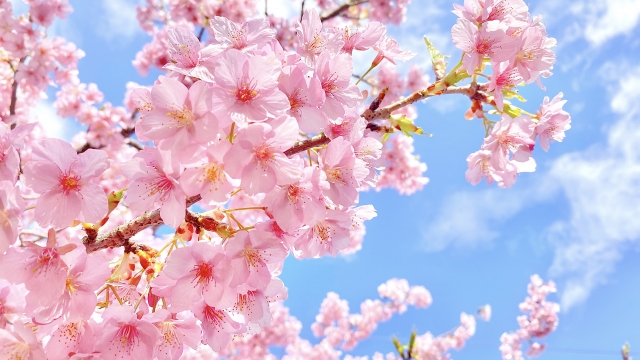
Hanami: Enjoying Japan’s Cherry Blossom Season
Spring in Japan is a time of renewal, warmth, and natural beauty. One of the most beloved traditions during this season is hanami (花見), which literally means “flower viewing.” While the word might suggest viewing various types of flowers, in Japan, it almost always refers to admiring the iconic sakura (桜) — cherry blossoms.
In this blog, we’ll explore the cultural significance of hanami, recommend some popular viewing spots, and share useful tips to help you make the most of this beautiful experience.
1.What is Hanami?
Hanami is a centuries-old tradition of gathering under blooming cherry blossom trees to appreciate their fleeting beauty. Families, friends, and even coworkers gather in parks or along riverbanks, enjoying a leisurely picnic while gazing at the blossoms.
During this time, you’ll often see people enjoying bento (弁当) — Japanese lunchboxes — filled with colorful, seasonal dishes. Many convenience stores and supermarkets sell special hanami bento (花見弁当) for the occasion. Additionally, traditional sweets like hanami dango (花見団子), which are three-colored rice dumplings on a skewer, are popular treats.
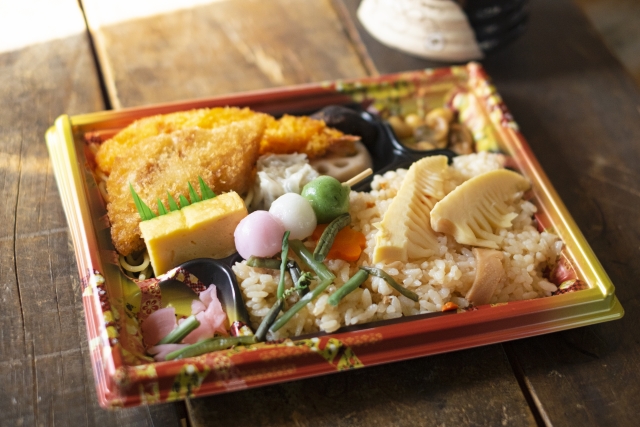
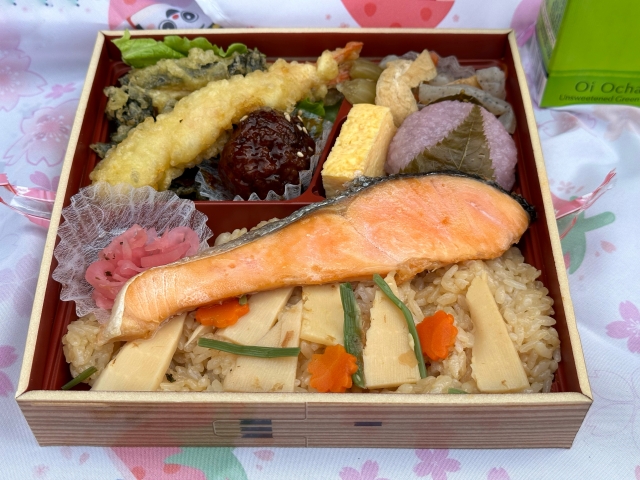
2.Best Hanami Spots in Tokyo
Tokyo offers numerous beautiful locations for hanami. Here are some of the most iconic places:
①Ueno Park (上野公園)
With over 1,000 cherry trees, Ueno Park is one of Tokyo’s most famous hanami spots. It gets crowded, but the festive atmosphere is worth experiencing.
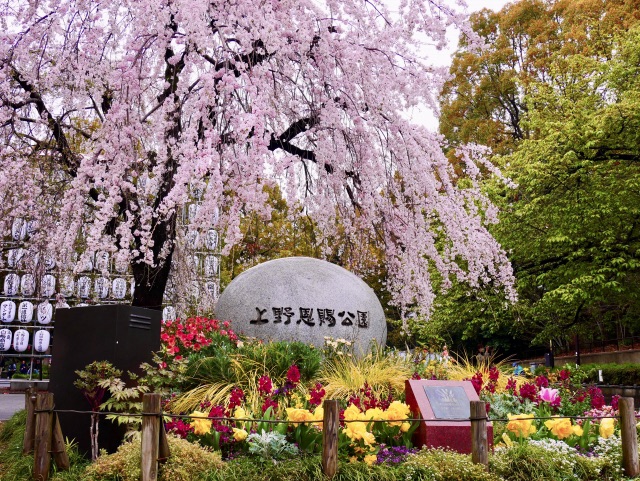
②Shinjuku Gyoen (新宿御苑)
This spacious garden is perfect for those who prefer a quieter hanami experience. It offers a variety of cherry blossom species, extending the viewing season.
③Sumida Park (隅田公園)
Located along the Sumida River, this park provides a stunning view of cherry blossoms with Tokyo Skytree in the background. The contrast between nature and modern architecture is breathtaking.
3.A Unique Hanami Experience in Ishikawa
Recently, Ishikawa Prefecture has gained popularity as a travel destination, ranking high on lists of places to visit in Japan. One particularly spectacular sight in Ishikawa during spring is the “Four-Layered Scenery” — a breathtaking view where cherry blossoms, snow-capped mountains, a flowing river, and vibrant yellow nanohana (菜の花) rapeseed blossoms create a vivid landscape.
A recommended spot to enjoy this mesmerizing view is Asahi Funakawa (あさひ舟川) in Toyama Prefecture, just a short journey from Ishikawa. Along the riverbank, rows of cherry trees bloom in unison, with the majestic Tateyama Mountain Range still covered in snow in the background. The contrast of the delicate pink blossoms, the golden rapeseed flowers, the shimmering blue river, and the white peaks creates a picturesque scene that captures the essence of spring in Japan.
Visiting during peak bloom, typically in early to mid-April, provides the best experience. Local festivals and events often accompany the season, offering traditional food stalls and cultural activities. Whether you’re taking a peaceful stroll along the river or enjoying a picnic beneath the cherry blossoms, Asahi Funakawa is a perfect choice for a memorable hanami experience.
For those planning a springtime visit, be sure to check the bloom forecasts to catch the scenery at its finest.
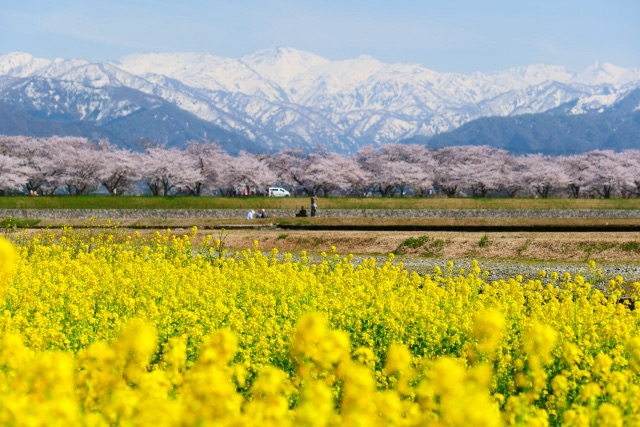
4.Tips for Enjoying Hanami Like a Local
1. Check the Bloom Forecast:
Cherry blossoms bloom at different times depending on the region, usually from late March to early April. Websites and weather forecasts provide detailed sakura zensen (桜前線) information, tracking the cherry blossom front as it moves from south to north.
2. Bring a Picnic and Enjoy Seasonal Foods:
Consider trying a hanami bento, which typically includes rice, tempura, and other seasonal delicacies. You can also prepare your own bento for a more personal touch.
3. Pack a Leisure Sheet:
Most Japanese bring a leisure sheet (レジャーシート), a waterproof mat used for sitting on the ground. These can be purchased for around 100 yen at convenience stores, 100-yen shops, or supermarkets.
4. Respect Nature and Others:
Cherry trees are delicate, and their roots are easily damaged. Avoid climbing or shaking the branches. Also, clean up after yourself. Trash bins may be scarce, so be prepared to take your garbage with you. Some parks provide temporary bins during hanami season, but it’s best to bring a small trash bag just in case.
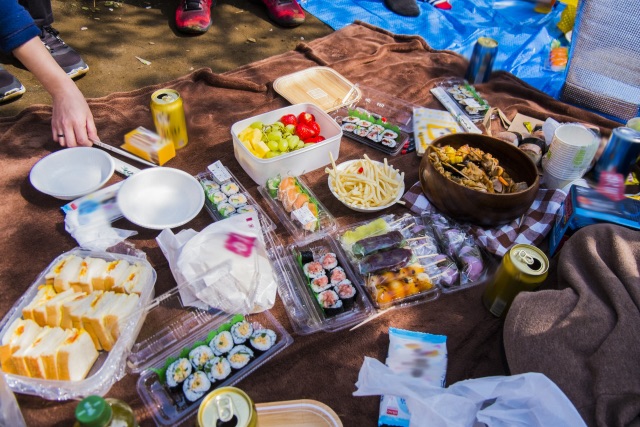
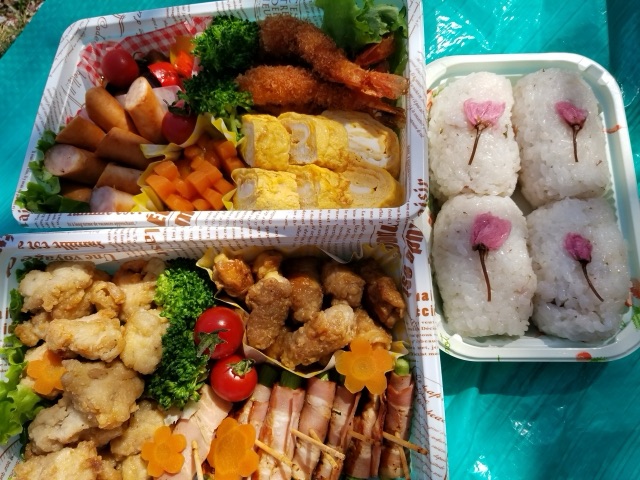
5.Learn Some Japanese for Hanami
Here are a few useful Japanese words to enhance your hanami experience:
• 花見 (Hanami) — Flower viewing
• 桜 (Sakura) — Cherry blossoms
• 弁当 (Bento) — Japanese lunchbox
• 花見弁当 (Hanami Bento) — Special picnic bento for cherry blossom viewing
• 花見団子 (Hanami Dango) — Three-colored rice dumplings
• レジャーシート (Rejā Shīto) — Leisure sheet or picnic mat
• 菜の花 (Nanohana) — Rapeseed blossoms
Practicing these words can help you connect with locals and make your experience more immersive.
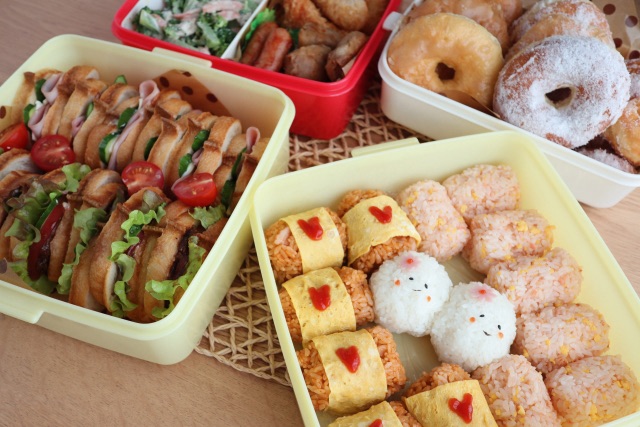
6.Final Thoughts
Hanami is more than just viewing flowers; it’s a celebration of nature, friendship, and the arrival of spring. Whether you’re visiting bustling Tokyo or exploring the picturesque landscapes of Ishikawa, taking part in hanami is a memorable way to experience Japanese culture.
So, pack a bento, grab a leisure sheet, and immerse yourself in the beauty of the sakura season. Don’t forget to check the cherry blossom forecast before you go!
Enjoy your hanami adventure!
7.Check the Cherry Blossom Forecast
Since cherry blossoms bloom at different times depending on the region, it’s a good idea to check the latest forecast before planning your hanami trip. Fortunately, Japan offers detailed and reliable cherry blossom updates online.
You can check the latest sakura forecast on the following websites:
• Weathernews – Cherry Blossom Forecast: Provides comprehensive updates on cherry blossom blooming times across Japan.
• Japan Meteorological Agency – Sakura Bloom Information: Offers official reports on cherry blossom bloom status.
Please note that these links may change from year to year. If you find any broken links, feel free to leave a comment, and I’ll update them with the latest information.
Stay informed and enjoy your hanami to the fullest!


